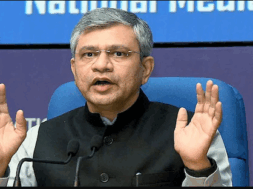
Aatma-Nirbhar Bharat: India’s defense imports fall 21% after 2016, says SIPRI
Virendra Pandit
New Delhi: Although India remains the world’s top importer in the defense sector, mostly from Russia, its dependence on imports in this sector has decreased by 21 percent since 2016 thanks to the aggressive campaign of an Aatma-Nirbhar Bharat Abhiyan (Campaign for a Self-Reliant India).
According to the Stockholm International Peace Research Institute (SIPRI)’s latest report, Trends in International Arms Transfers, 2021, India’s total volume of imports fell by 21 percent from the period 2012-2016, which could reflect the country’s push to manufacture arms and weapons systems indigenously.
As part of its aggressive Aatmanirbhar Bharat campaign, including indigenous production of defense equipment, the Centre has earmarked 68 percent of the capital budget for 2022-23 for domestic manufacturing industries.
The volume of global arms transfers between 2017 and 2021 was 4.6 percent less than during the 2012-16 period. The 2017-21 period’s global arms transfers were, however, 3.9 percent more than for the 2007-11 window, the report said.
The five largest defense importers in the 2017-21 period were India, Saudi Arabia, Egypt, Australia, and China, while the five biggest exporters of arms in the same period were the United States, Russia, France, China, and Germany.
According to the SIPRI report, India, Saudi Arabia, Egypt, Australia, and China accounted for nearly 38 percent of global arms imports between 2017 and 2021. India accounted for 11 percent of global arms imports in 2017-21, and China 4.8 percent.
Russia remained India’s largest supplier of arms in the 2012-16 and 2017-21 periods, but the volume of imports from Moscow fell by 47 percent. However, India’s imports from France increased substantially, making Paris the second-largest supplier of arms to the country in this period.
Saudi Arabia was the second-largest arms importer in 2017-21. Riyadh’s percentage in world imports was 11 percent, the same as India’s. Arabia’s total arms imports volume increased by 27 percent during this period, with the US accounting for 82 percent of its imports.
Egypt accounted for 5.7 percent of global arms imports in 2017-21. It saw a 73 percent increase in the volume of imports.
Australia, the fourth-largest importer, witnessed its imports rise by 62 percent in 2017-21, as compared to 2012–16. It contributed to 5.4 percent of global arms imports during 2017-21.
China’s imports remained consistent at 4.1 percent of global imports between 2012-16 and 2017-21.
Among the arms exporters, the US, Russia, France, China, and Germany accounted for nearly 77 percent of global defense equipment exports during the 2017-21 period. While exports from France and the US increased, those from China and Russia fell during the 2017-21 period.
Arms exports from the US grew by 14 percent in 2017-21. America accounted for 39 percent of global arms exports during this period, an increase from 32 percent in 2012-16. The US exported nearly 108 times more arms than Russia during 2017-21, the report said.
Russia’s arms exports fell by nearly 26 percent during 2017-21 as its share of global arms exports fell to 19 percent in 2017-21 from 24 percent in 2012-2016. India, China, Egypt, and Algeria were the top four markets for Russian arms.
France accounted for nearly 11 percent of global arms exports in 2017-21, with a 59 percent increase during 2017-21, as compared to 2012-16. India, Qatar, and Egypt were the three biggest importers of French arms.
In 2017-21, China accounted for 4.6 percent of global arms exports, a 31 percent drop from its exports share in 2012-16. However, 47 percent of China’s exports during 2017-21 went to just one country, Pakistan.
Germany’s arms exports accounted for 4.5 percent of global exports during 2017-21. The total volume of German exports was 19 percent lower than in 2012-16 and 40 percent less than in 2007-11, the report added.














